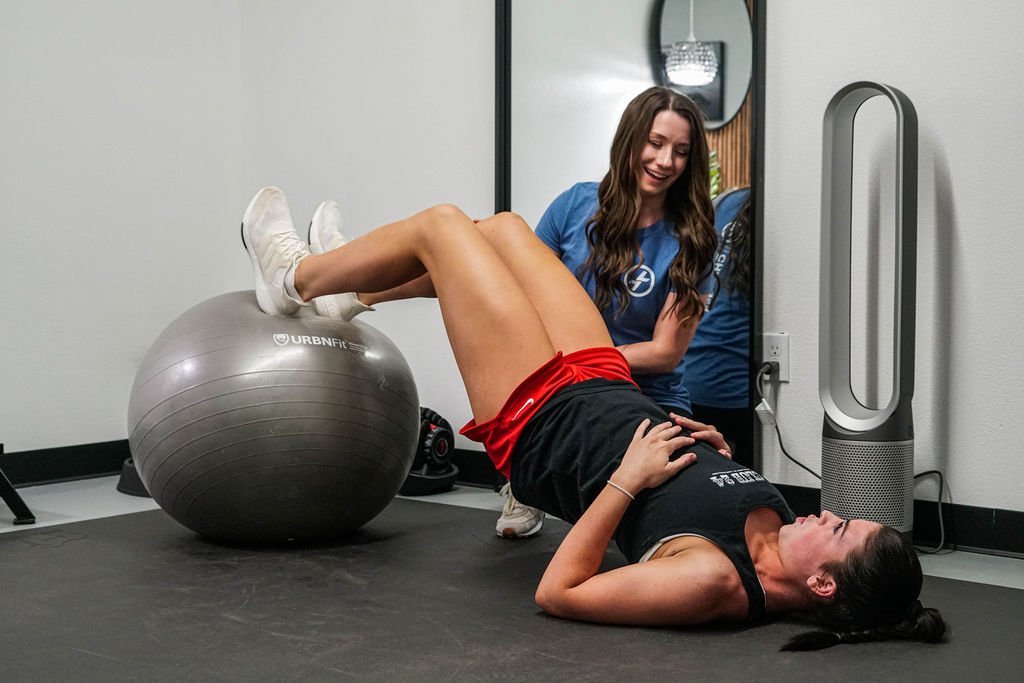How to Prevent Hamstring Injuries in Soccer
Here’s a word of advice for soccer players who are focused on having a long, healthy career - focus on hamstring strengthening. Having healthy hamstring muscles are worth their weight in gold when it comes to injury prevention.
That’s because the hamstrings work to help balance overactive quadriceps, a common occurrence in soccer players, and prevent ACL injuries. Believe it or not, the hamstrings also help in preventing and treating current low back pain.
I have three major recommendations for creating your healthiest hamstrings and preventing hamstring injuries in soccer.
Train hamstring strength consistently in the off-season and while in season
Add targeted hamstring exercises and gradual sprints to your warm-up
Add dynamic hamstring mobility exercises (ex. yoga) to your routine 2x per week
Hamstring-Focused Strength Training for Soccer Players
Many people think that having tight hamstring makes them strong. But actually, it’s just the opposite - when the hamstrings are super tight, they’re also usually weak. By focusing on targeted strength training exercises you can help decrease knee pain, reduce risk of injury, and improve your performance with speed, agility, and power.
Work on strengthening during the season ensures that you don’t lose out on all the progress and gains you made in the off-season. A lot of athletes are concerned that strength training during the season will make them sore for games and practices, so they start skipping workouts. However, your strength training should be programmed accordingly to help you keep up your strength without excessive soreness afterwards. Take care of this step first and make a regular training routine that compliments your practice and game schedule.
I recommend choosing at least two of the following hamstring exercises to add into your strengthening routine at a minimum of twice per week. Aim for challenging yourself with 2-3 sets of 10-15 reps on each side. Start with a light weight that you know you can do easily to avoid overdoing it at the beginning.
Hamstring Exercises for Preventing Injury:
Side lunges onto the round side of a Bosu ball
RDLs (double leg or single leg with eccentric control)
Bulgarian squats (make sure your back foot is on an elevated surface that isn’t too high)
Single leg squats (start by tapping glutes down to a box or elevated chair)
Hamstring curls with a stability ball (double or single leg)
TRX Hamstring curls
Good mornings
Do It Right: Warm-Up Exercises and Gradual Sprints
Ensure that your warm-up is actually working for you and helping you prevent hamstring injury. It’s essential to have a warm-up that includes exercises that target hamstring activation, mobility, and a progressive sprint series, since you play soccer.
By the end of the routine, you should feel warmed up (literally) and ready to go play. If you don’t feel like you could go jump into the game and play your best, then you probably aren’t getting a good enough warm-up. If you need help creating or optimizing your current routine, I recommend contacting your local sports physical therapist or working with a strength and conditioning specialist to customize the program.
After doing some dynamic warm-up exercises I strongly encourage you to do some sprinting as well. A progressive sprint series should include:
Running straight forward
Changing direction
Cutting movements
During each part of the running sequence, do 3-5 reps of each and make sure to progress from light jogging towards full speed sprinting. This allows the muscles, tendons, and ligaments to adjust to the varying demands and intensity of your sport - which ultimately protects the hamstrings from injury.
You’ve Got to Move It — Mobility training for healthy hamstrings
Make time to address mobility in your routine. It doesn’t have to be daily, but set aside 15-20 minutes, twice per week to address mobility of your total body (not just the hamstrings). Choose a mobility practice (like yoga) that allows you to move through a range of motion, not just stretching and holding, is excellent.
Yes, it’s important to work on on mobility of the hamstrings, but also target total hip mobility in all directions. This will allow the muscles, joints, tendons, and ligaments to react better to movement and increased demands. By moving your body through it’s available range of motion, you’ll actually gain mobility in the long run. And if the muscles in the hamstring can move and stretch then you’ll be at a lesser risk of muscle strain.
So there you have it, my top three tips for preventing hamstring injuries - strengthen year-round, do a gradual progression of warm-up exercises, and then mobilize weekly.
Have a hamstring injury? Reach out to us. We can get you back on the soccer field. Book a free discovery call here. You can also learn more about our physical therapy treatment for soccer players here.
Next on your reading list:

